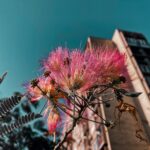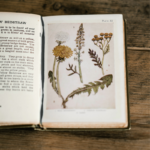When I was younger, I used to pride myself on an inaccurate picture of who I was and how I reacted to stress. I believed myself to be someone who was unaffected by stress: “I just don’t get stressed out. Stressful situations happen, but they just don’t get to me,” I would say, making full eye contact and believing myself thoroughly. What I came to realize later was that … [Read more...] about HOLISTIC SELF-CARE: 15 Harmonious Rituals to Relax + Awaken
herbalism
Tools For The Burgeoning Herbalist
I was looking back on a post I wrote several months ago about How To Create A Bad-Ass Herbal Scrapbook, and I thought that a few more resources might be handy – so I made you some :) Firstly, I think the vocabulary of herbalism can be a little daunting at first. We use a lot of words to describe herbal actions and dosing patterns that aren't really part of everyday conversation … [Read more...] about Tools For The Burgeoning Herbalist
Materia Medica 101: How To Create A Bad-Ass Herbal Scrapbook
Over the years, learning herbs has been one of my life's most rewarding experiences. Some of my fondest memories involve a giant blue IKEA bag filled with herb books (I took it with me to my husband/then-boyfriend's house for research, obviously), study groups with my closest friends (inventing herbal protocols for monsters), and spending time observing nature and freaking out … [Read more...] about Materia Medica 101: How To Create A Bad-Ass Herbal Scrapbook
Rumex crispus: Spring Yellow Dock
Yellow dock is popping up in my part of the world! I'm ecstatic to see that spring is on its way. It will likely snow several more times before the end of May, but fruit trees are budding – some even blooming – and the greens of dandelion, yarrow, plantain, and yellow dock are beginning to show themselves. I find myself coming to life as the plants yawn and stretch, all of us … [Read more...] about Rumex crispus: Spring Yellow Dock





